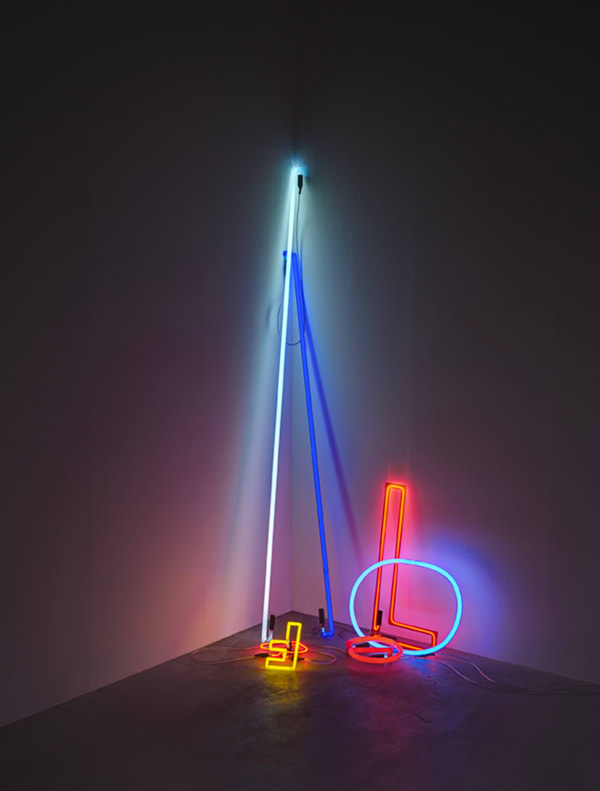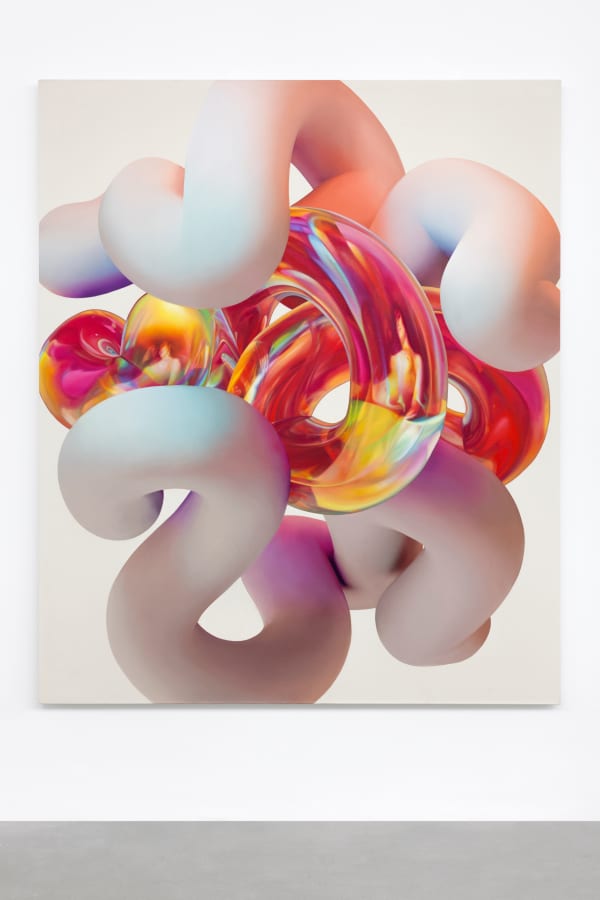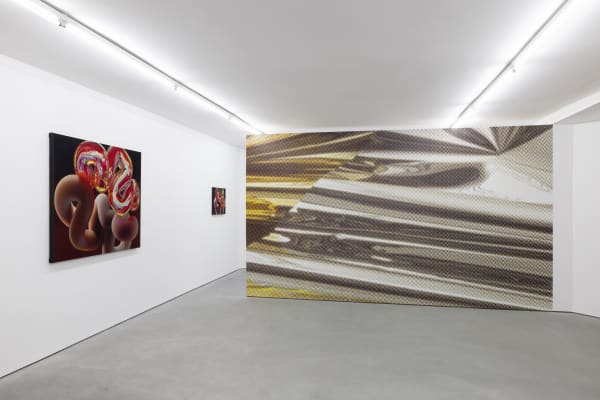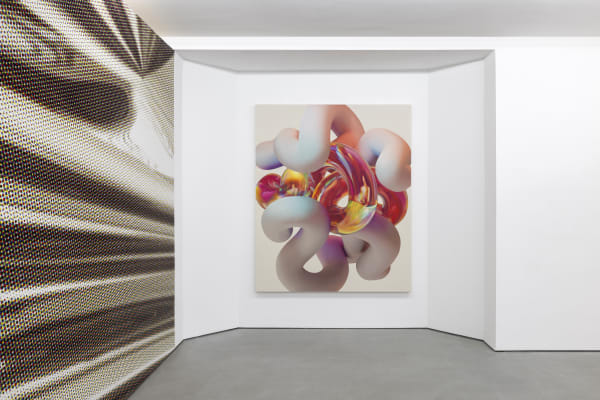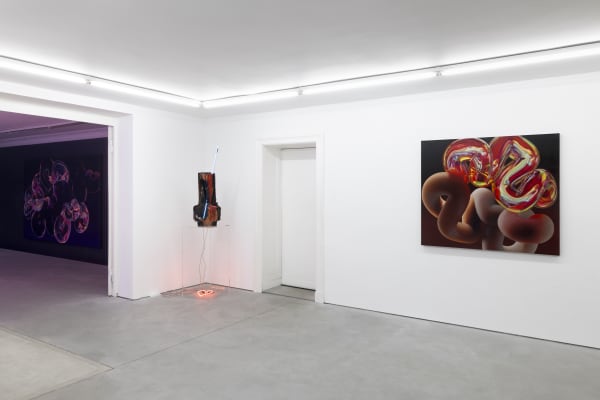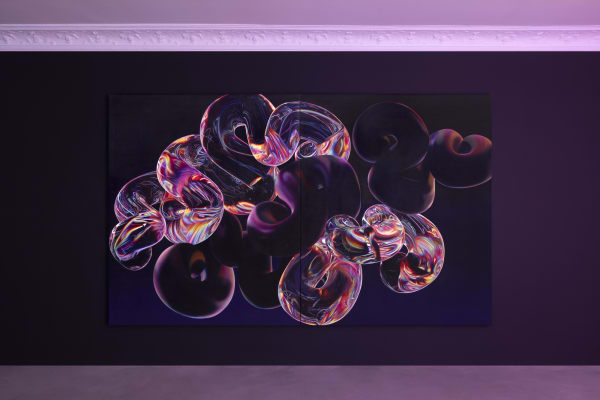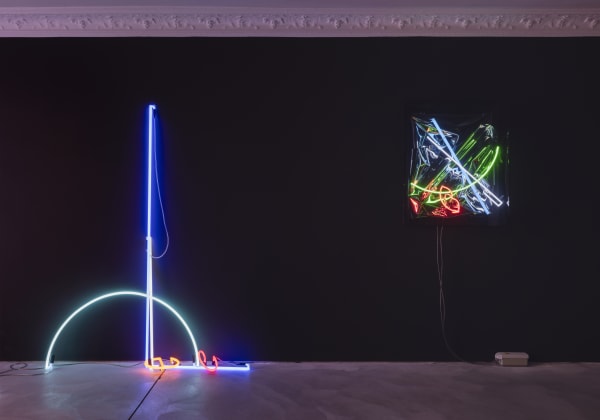Flux of Light: Anselm Reyle & Vickie Vainionpää
-
 Anselm Reyle, Untitled, 2023
Anselm Reyle, Untitled, 2023 -
 Anselm Reyle, Untitled, 2023
Anselm Reyle, Untitled, 2023 -
 Anselm Reyle, Midnight Walker, 2024
Anselm Reyle, Midnight Walker, 2024 -
 Anselm Reyle, Straw Bale, 2024
Anselm Reyle, Straw Bale, 2024
Future Gallery is pleased to present Flux of Light, a duo exhibition featuring Anselm Reyle and Vickie Vainionpää. Both artists engage with abstraction in ways that interrogate materiality and perception, bringing together histories of both art and technology. Reyle, whose work oscillates between painting, sculpture, and installation, draws from the legacies of modernist abstraction, Arte Povera, and postwar industrial aesthetics. His use of reflective foils, neon lights, and ceramics disrupts the conventional boundaries of painting, creating haptic surfaces that resonate with both tactile immediacy and critical distance. Vainionpää, in contrast, approaches abstraction through the lens of contemporary technology, using eye-tracking data and generative algorithms to translate the act of looking into painterly abstraction. Her works blur the distinction between human gesture and machine logic, revealing a dynamic interplay between intuition and automation in the creative process.
Reyle presents several new works in this exhibition, including Midnight Walker, a glazed ceramic vase inspired by the distinctive forms and glazes of West German 1950-60s era ceramics. This piece is a reflection on the process of construction and deconstruction, echoing the raw, industrial aesthetics that permeate much of his practice. His signature foil paintings, with their luminous, crinkled surfaces, capture the tension between high-modernist abstraction and the gloss of contemporary commercialism.
Vainionpää’s Gaze series, which includes the works Night, Mars and the Vestal Virgin, and Le Sommeil, challenges the traditional role of the viewer in the act of looking. Using eye-tracking software to map her gaze as she observes iconic works from art history, Vainionpää translates these visual patterns into undulating, abstract forms. Her practice merges digital technology with oil painting, exploring the ways in which human perception can be both documented and reinterpreted through machine-generated processes. Mars and the Vestal Virgin, referencing Jacques Blanchard’s 1630 painting, and Le Sommeil, a response to Gustave Courbet’s 1866 work, both subvert historical tropes of the female figure by mapping Vainionpää’s own subjective gaze, shifting agency from the traditional male spectator to the artist herself.
Beyond this engagement with art historical narratives, her work also explores the evolving role of authorship and intuition in an era increasingly shaped by artificial intelligence. Her algorithmically generated compositions, later translated into oil paint, blur the line between digital precision and the expressive qualities of traditional painting, questioning the boundaries between the virtual and the physical. Night, another work in this series, expands on the relationship between vision, subjectivity, and representation, emphasizing how technology mediates and alters perception.
Reyle’s site-specific neon installation creates an immersive environment that directly engages with Vainionpää’s large-scale canvases, adding a dynamic layer of color and light to the space and amplifying the dialogue between the two artists. This interplay between their works can be seen as a kind of collaboration—Reyle’s neon compositions, with their industrial precision and artificial glow, extend beyond their sculptural presence, casting shifting reflections across Vainionpää’s paintings and activating their digitally inspired forms in new ways. In turn, Vainionpää’s Flux of Light (Dark Mode 5) responds to this interplay, incorporating the visual language of artificial illumination into her generative compositions. The work marks a hybridization of her Dark Mode and Gaze series, taking inspiration not from a historical painting but from Reyle’s own neon environment. Here, she pushes the dialogue between materiality and immateriality even further, reflecting on how digital aesthetics and technological mediation shape contemporary abstraction. Together, their works create a space where analog and digital, past and future, and industrial and painterly processes converge in a dynamic exchange of light, color, and form.
In Flux of Light, Reyle and Vainionpää engage in a shared exploration of abstraction, materiality, and the act of looking. Reyle’s use of industrial materials and neon installations reflects an ongoing interest in the intersection of art history and the present-day visual culture, while Vainionpää’s work uses digital tools to reframe traditional questions of the gaze, subjectivity, and mark-making. Together, their works form a dialogue that speaks to both the material evolution of abstraction and its shifting role in an increasingly digitized world.

